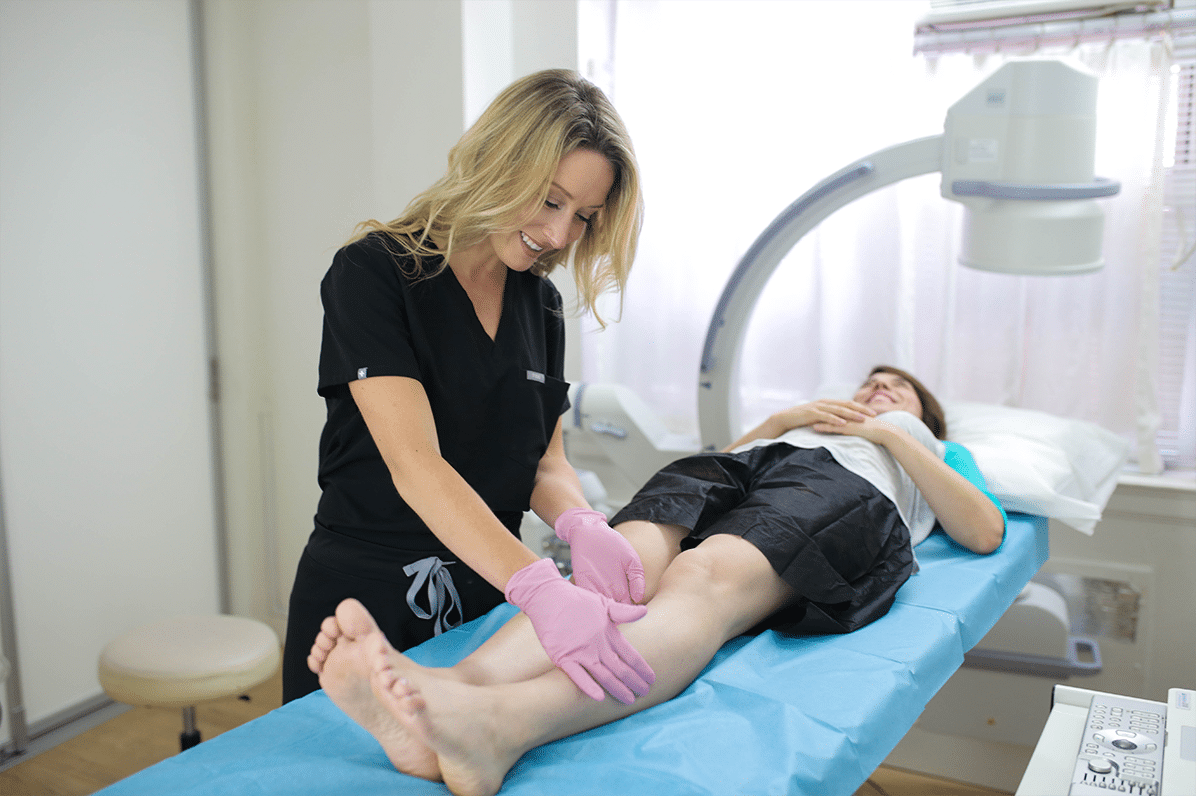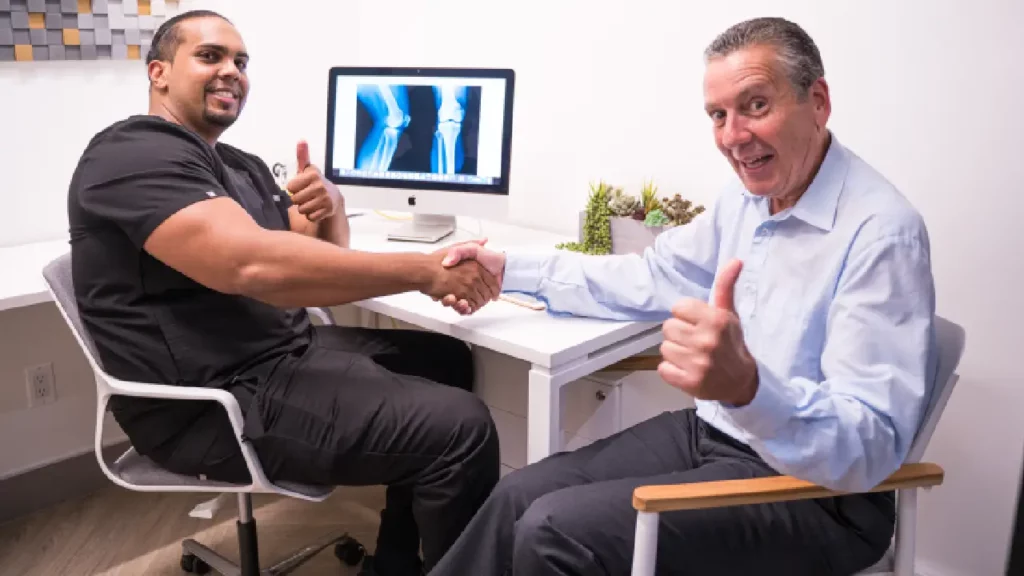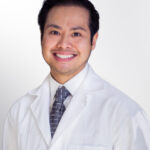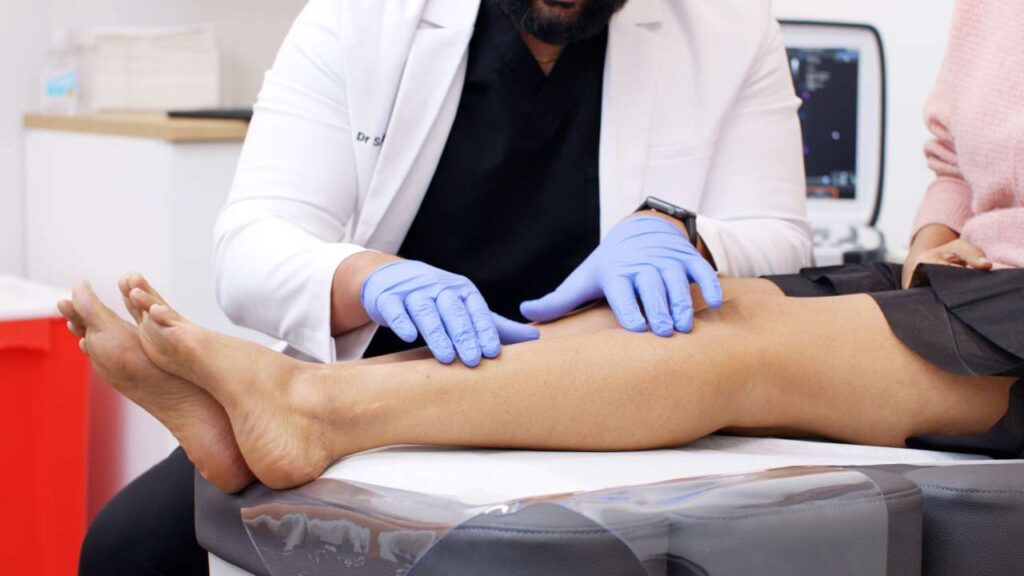“What are the signs and symptoms that indicate I need to consult a vein doctor near me in Hackensack, New Jersey?”
Are you wondering if you “need to consult a vein doctor near me in Hackensack, New Jersey?” If so, you probably have signs and symptoms of vein disease (chronic venous insufficiency), such as leg pain, leg heaviness, spider veins, etc. If you suspect you may have vascular disease, you must immediately consult a reputable vein doctor or vein center. You must find state-of-the-art vein centers that accurately diagnose the root cause of your symptoms, and curate the ideal minimally invasive treatment plan.
But what are the signs and symptoms to look for? Well, the following are some of the most common warning signs and symptoms of vascular disease:
- Leg pain
- Leg heaviness
- General exhaustion
- Throbbing leg veins
- Frequent leg cramps and muscle spasms
- Restless leg syndrome, i.e., when your legs keep moving uncontrollably
- Spider veins, i.e., dense clusters of blood vessels on the skin’s surface
- Swollen ankles and feet
Most of these signs and symptoms can be mistaken for signs of aging and exhaustion. However, a strong indication that they’re caused by vascular disease is if they worsen at the end of the day or after long periods of sitting or standing still. Even if you’re not sure about their root cause, it’s still worth consulting 5-star vein centers near Hackensack that use the latest diagnostic methods, such as vascular imaging. Please continue reading to learn more about vascular disease.

I have symptoms like leg pain, leg heaviness, and spider veins. Do I have carotid artery disease, aortic aneurysm, or vascular disease?
Do you have symptoms like leg pain, throbbing leg veins, leg cramps, leg heaviness, and spider veins? As mentioned previously, these signs and symptoms indicate that you may have vascular disease, and you must consult a reputable vein doctor near your location.
However, people often assume that these signs and symptoms may also indicate carotid artery disease or aortic aneurysm. Carotid artery disease is a condition in which fatty deposits block the blood vessels carrying blood to your brain. An aortic aneurysm is the formation of an abnormal bulge on the aortic walls, i.e., the walls of the blood vessels. Neither of them is responsible for spider veins and varicose veins.
Leg pain, leg heaviness, and spider veins occur because of an underlying vascular disease called chronic venous insufficiency. Healthy veins consist of vein valves that ensure smooth one-way blood circulation to the heart. Chronic vascular disease occurs when your vein valves collapse, causing blood to flow backward, accumulating in your leg veins.
Over time, the continued accumulation of blood in leg veins leads to varicose vein problems, including leg heaviness, leg pain, throbbing veins, spider veins, etc. That’s why your symptoms worsen at the end of the day or after long periods of sitting or standing still — because that’s when you have the maximum volume of blood accumulated in your leg veins.
What happens if I don’t consult a vein doctor even if I have the signs and symptoms of vascular disease?
Vascular disease is a chronic condition, i.e., it worsens over time. If you don’t consult vein doctors and vein centers, vascular disease signs and symptoms will continue worsening until you have major complications and vein problems.
If left untreated, the vascular disease leads to the following complications:
- Varicose veins — bulging veins that look like a dense mass of tangled and knotted ropes.
- Skin disease — the breakdown of blood cells makes your skin develop rust-colored and leathery patches.
- Leg ulcers — the lack of blood circulation prevents wounds from healing properly, leading to non-healing wounds on your skin’s surface.
- Skin discoloration — the lack of blood circulation makes your skin look pale and lifeless.
- Deep vein thrombosis — the transformation of accumulated blood into blood clots within your leg veins.
- Pulmonary embolism — if the blood clots break away, they may travel to your lungs, which can be potentially fatal.
What can I expect from minimally invasive treatment options for vascular disease?
When looking for vein doctors and vein centers, you must focus on board-certified vein doctors with years of experience in minimally invasive treatment options, such as radiofrequency ablation, endovenous laser ablation, and VenaSeal. You must avoid vein centers that recommend vascular surgery, which was the popular treatment for the vascular disease a few decades ago, but it’s no longer considered appropriate because of the high risk of infections.
All minimally invasive treatment options have the same underlying goal — collapse the diseased blood vessel to reroute the accumulated blood into healthier veins. However, they accomplish this goal using different methods, such as thermal energy, laser energy, or medical-grade adhesives. Once the diseased vein is collapsed, the accumulated blood flows to healthier veins to restore smooth blood circulation to the heart.
Minimally invasive treatment options are nonsurgical and cause minimal pain and discomfort. They have a negligible risk of side effects or complications, such as infections and deep vein thrombosis. Furthermore, minimally invasive treatment options conclude within an hour with no downtime, allowing you to resume most of your daily activities immediately after the treatment.
Schedule an appointment with our state-of-the-art vein centers today.
Vein Treatment Clinic is one of the best state-of-the-art vein centers in New Jersey. Our vein center is helmed by Dr. Sareh Rajaee, the best board-certified vein doctor in New Jersey, with years of experience in minimally invasive treatment options. Our vein center is located in Clifton, a short drive from the Ford dealership on route 46-E, and less than 15 minutes from the Hackensack community via Garden State Parkway and 2 Passaic St. For more information, please schedule an appointment with our board-certified vein doctor today.






